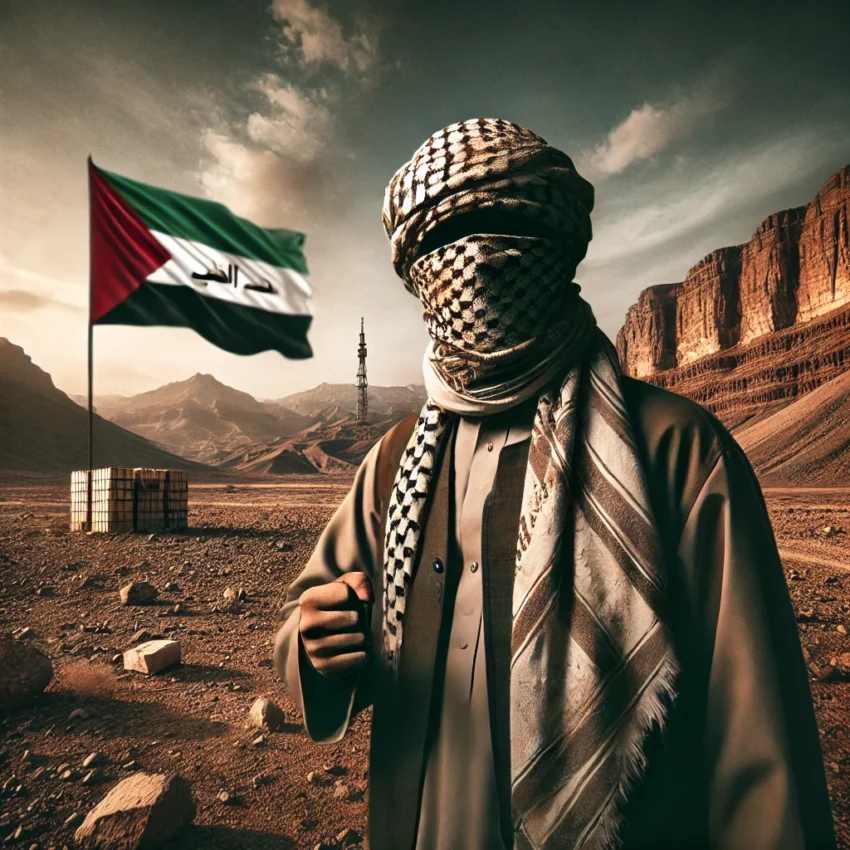Yemen remains a fractured and volatile battlefield. The Houthi-led government in Sana’a claims legitimacy while international powers recognize a rival authority in Aden. This pillar article dissects Yemen’s dual leadership, military forces, and foreign entanglements — with insights framed through a Western/NATO strategic lens.
🇾🇪 Overview: Yemen’s Ongoing Civil War
Since 2014, Yemen has been locked in a brutal civil war between the Iran-backed Houthis (Ansar Allah) and the Saudi-aligned internationally recognized government. While the Houthis control the capital Sana’a and much of the northwest, rival leadership based in Aden — supported by Saudi Arabia, the UAE, and the West — struggles to maintain legitimacy.
A tenuous ceasefire has reduced open conflict, but tensions remain high, and a formal peace deal is elusive. The humanitarian crisis, meanwhile, continues to escalate, with over 70% of Yemen’s population needing aid.
📌 Quick Facts
- De Facto Ruler (North): Abdul-Malik al-Houthi (Houthi leader)
- Official President (South): Rashad al-Alimi (Presidential Leadership Council)
- Capital Cities: Sana’a (Houthi-held), Aden (Saudi-backed government)
- Foreign Involvement: Iran, Saudi Arabia, UAE, USA, UK
- Status: Ceasefire (UN-brokered) with sporadic clashes
Insight: Yemen functions as two states — one backed by Tehran, the other by Riyadh and the West.
👤 Leadership Profile
Yemen’s leadership is divided. In the north, the Houthis — led by the elusive Abdul-Malik al-Houthi — maintain a theocratic grip on power. In the south, Rashad al-Alimi leads a fragile coalition recognized internationally but plagued by infighting.
| Attribute | Houthi Leader | Southern President |
|---|---|---|
| Name | Abdul-Malik al-Houthi | Rashad al-Alimi |
| Title | Supreme Leader of Ansar Allah | Chairman, Presidential Leadership Council |
| Base | Sana’a | Aden |
| Foreign Backer | Iran | Saudi Arabia, UAE, U.S. |
| Style of Rule | Theocratic, centralized | Coalition-based, fragmented |
The dual leadership setup remains a core obstacle to national reunification and long-term peace.
🛡️ Armed Forces Overview
Yemen’s military landscape is as fractured as its politics. Each side maintains distinct armed forces, supported by different foreign sponsors.
| Faction | Estimated Manpower | Key Notes |
|---|---|---|
| Houthi Forces | ~150,000 | Highly organized, includes tribal militias |
| Southern Armed Forces | ~100,000 | Includes UAE-trained Southern Transitional Council troops |
| Republican Guard Remnants | ~30,000 | Ex-Saleh loyalists absorbed into Houthi ranks |
| Al-Qaeda in the Arabian Peninsula (AQAP) | ~5,000 | Still active in rural southern provinces |
Strategic Note: Western analysts warn of AQAP exploiting governance gaps in the south.
⚔️ Weapons & Capabilities
Yemen’s battleground is heavily militarized. Weapons come from foreign donors, captured stockpiles, and improvised local production — including missile and drone tech.
| Capability | Description |
|---|---|
| Missile Arsenal | Houthis deploy Iranian-designed ballistic and cruise missiles |
| Drone Warfare | Used for both reconnaissance and kamikaze strikes, especially near Saudi border |
| Naval Mines | Deployed in Red Sea, threatening global shipping lanes |
| Captured Weapons | Stockpiles seized from Yemeni military, including tanks and SAMs |
Western Military Assessment: Iran’s asymmetric warfare model is now operational in Yemen.
🧠 Domestic Control
Governance in both Yemeni administrations is weak. Houthi areas have centralized control but face international isolation. Southern zones are plagued by infighting, corruption, and tribal power struggles.
- Media Censorship: Heavy in Houthi areas; relatively freer in Aden
- Judicial Systems: Houthi courts enforce Zaydi-influenced Sharia law
- Local Powerbrokers: Southern Transitional Council often overrides official ministries
- Human Rights: UN reports widespread violations in both territories
NATO Watchpoint: Lack of unified rule hinders humanitarian access and counter-terror coordination.
📅 Conflict Timeline
Here are the pivotal events that shaped Yemen’s current reality:
| Date | Event |
|---|---|
| 2014 | Houthi forces seize Sana’a |
| 2015 | Saudi-led coalition begins military intervention |
| 2022 | UN-brokered truce reduces major combat |
| 2023 | Presidential Leadership Council formed in Aden |
| 2025 | Ceasefire fragile; Red Sea attacks continue |
🌍 Foreign Involvement & Influence
Yemen has become a proxy battlefield for larger geopolitical rivalries, notably Iran vs. Saudi Arabia, and increasingly the West vs. Iran-aligned militias.
| Country/Actor | Role |
|---|---|
| Iran | Primary backer of Houthis; supplies drones, missiles, training |
| Saudi Arabia | Leads coalition supporting the Aden-based government |
| UAE | Supports Southern Transitional Council; special forces deployed |
| USA/UK | Provide intelligence and arms to Saudi-led coalition |
| UN | Mediates ceasefires and humanitarian access |
🧭 Messaging vs Reality
Public narratives from both sides diverge sharply from ground realities, especially in terms of governance and peace intentions.
| Official Statement | Western Interpretation |
|---|---|
| “We fight for Yemen’s sovereignty” (Houthis) | Iran-backed consolidation of northern control |
| “The legitimate government of all Yemen” (Aden) | Fragmented authority, limited geographic control |
| “Peace is possible” (both) | Proxy dynamics and internal division stall resolution |
⏳ Succession & Risk Assessment
Risks remain high across several axes — from renewed war to terrorist resurgence.
| Risk Factor | Impact | Details |
|---|---|---|
| Proxy Escalation | Very High | Iran-Saudi confrontation could reignite full conflict |
| AQAP Resurgence | High | Weak southern governance offers safe haven |
| Economic Collapse | High | Currency devaluation and famine risk widespread instability |
| Humanitarian Crisis | Severe | 24M+ Yemenis rely on international food and medical aid |
🧠 Strategic Summary (Western Viewpoint)
- Threat Level: High — active conflict zones, terrorist threats, Red Sea instability
- Opportunities: Leverage ceasefire to push permanent resolution
- Western Focus: Block Iranian influence, combat AQAP, stabilize Red Sea shipping lanes
WeaponLeaders.com Verdict: Yemen remains one of the most volatile security risks in the region. Without meaningful peace efforts, the West faces growing threats across energy, trade, and counter-terror fronts.
